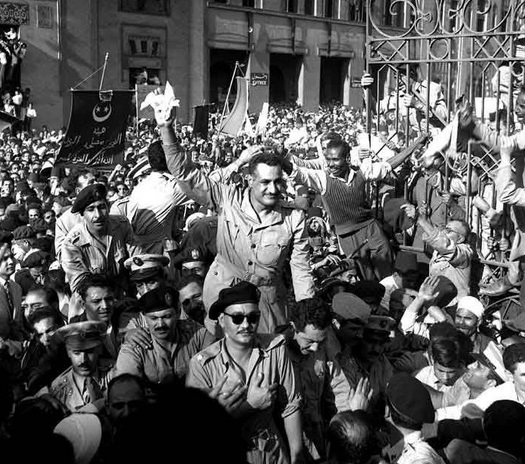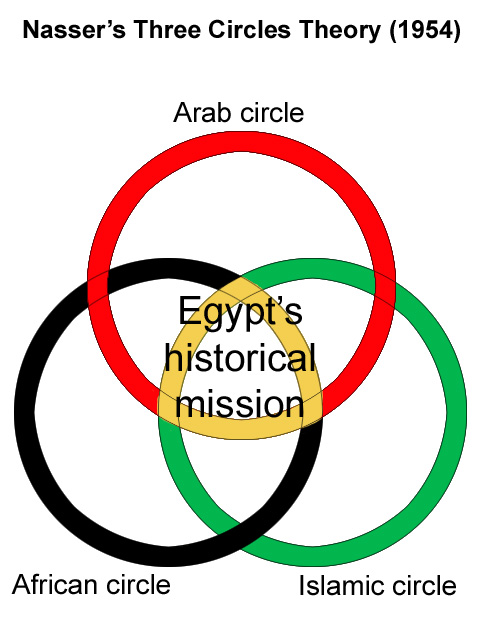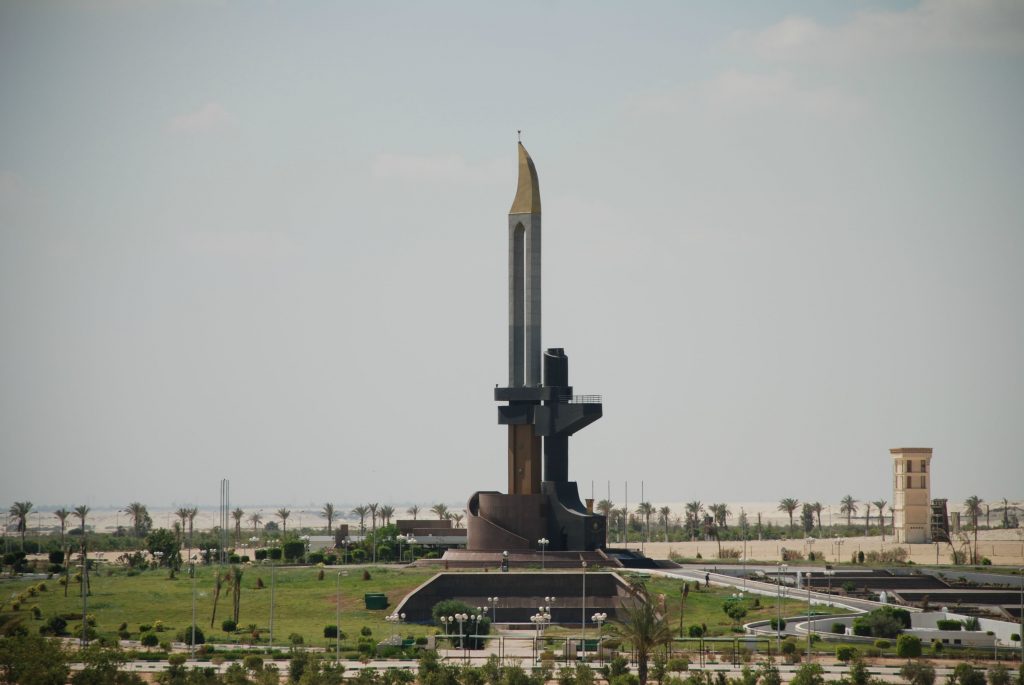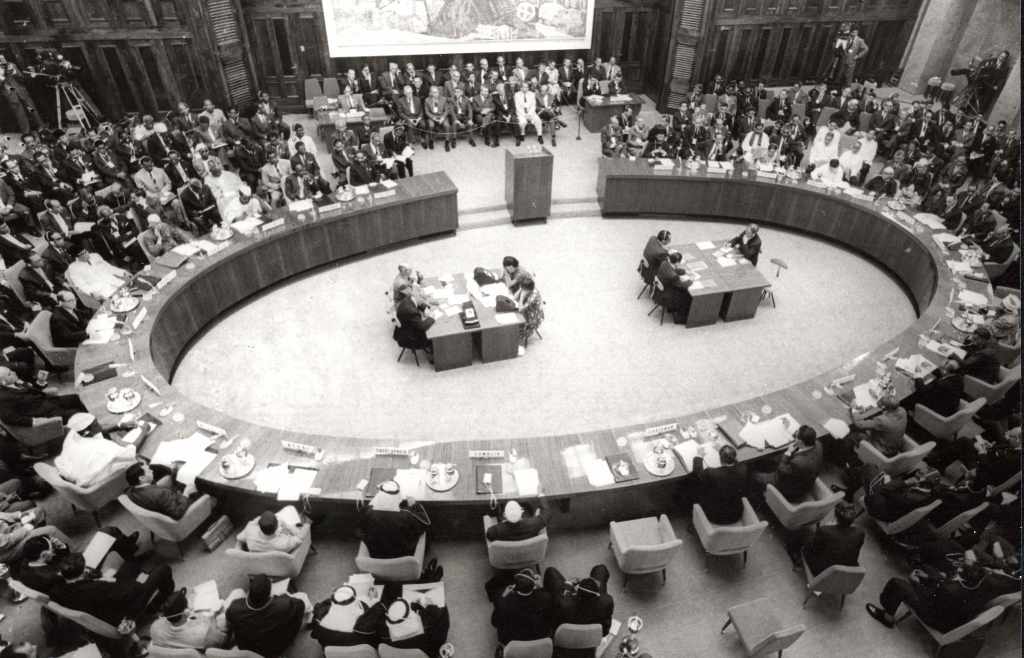If you’re like me, you find fringe political ideologies really fascinating. The vast majority of people aren’t like me, but hey, if you’re here, you must be at least a little inclined the same way. But here’s the thing, Nasserism isn’t really fringe. It’s regional sure, but at its peak, it was one of the most important ideological systems in the entire Middle East and North Africa region. I’ve already written about the ideology’s founding father, which you can read here, but this time we’re just focusing on what it is. This is your introduction to Nasserism!
Table of Contents
- Nasserism in a Nutshell
- Nasser’s Three Circles Theory
- Arab Socialism
- Anti-Zionism
- Nasserism and Positive Neutralism
- Where is Nasserism Today?
Nasserism in a Nutshell

We’ll get down to the nitty-gritty shortly, but first, let’s just give you a quick idea of it to get the ball rolling. Nasserism is an Arab socialist, pan-Arab, anti-imperialist and republican oriented ideology… Okay, that probably doesn’t help that much, so I’ll try breaking those components down first.
Arab Socialist, huh? So, he was a communist then? No, actually Nasser was quite anti-communist and had the communist party of Egypt banned under his rule. Oh, so it’s like when the Nazis co-opted socialist and faked it, right? …Also, no, not really. Nasserism did embrace many concepts developed in the socialist bloc and it was very much based on opposition to exploitative capitalism, land redistribution to landless peasants, secularism, anti-monarchy, nationalization of key sectors and all that. But it was still a perversion of the term socialism as it denied Marxist concepts like class struggle and workers ownership of production, as well as failing to take the majority of the means of production out of private hands. We have a separate little article on Arab Socialism alone.
Another defining factor of Arab socialism was the second part here, pan-Arabism. While Marxist socialism called for a belief in firm internationalism and considering class more important than any other factor affecting the people, Nasserist ideology and other Arab socialist ideology saw the need for a united Arab state. The Arab people specifically needed to be brought together, not just a general working class. With the collapse of the Ottoman Empire and the carving up by European and American colonial powers that followed, it’s no wonder that the embittered and stagnating Arab nations of the time looked to a shining future of unity under one banner based on shared language, culture and identity. Nasserism tapped into this perhaps better than any other Arab socialist ideology, certainly in its time.
The anti-imperialism mentioned comes across in Nasserism’s firm refusal to allow foreign control of its nation and resources. As Arab nations had historically been crushed under the jackboot of foreign powers, it’s hardly surprising that this would take such a central role. This manifested in many ways, from opposition to British political control, to French financial control and Israeli territorial control, as well as vying influences from both the US and USSR.
At last, republican… Well, if you’re American this might confuse you a bit, but republicanism carries a different meaning in a country that was not in fact a republic yet. Egypt had been a monarchy prior and indeed, Nasser had grown to loathe the influence of such societal elites. He felt that the Egyptian people were being neglected and abused by these entrenched, corrupt masters so wished for a country where the people would be in control. In other words, a republic, one based on the people’s demands and not the demands of royalty, clergy or foreign powers. Whether this was what Nasser actually achieved is certainly a matter for debate…
With that all out of the way, I think it’s time to start diving in deep on some of the key characteristics of Nasserism!
Nasser’s Three Circles Theory

In 1955, Nasser did a big part of my job for me and wrote a book called Egypt’s Liberation: The Philosophy of the Revolution, in which he laid out many of the key goals and intentions for the Egyptian revolution. Much of this was to change pragmatically over the years, but one key theory was that of the ‘three circles.’ This was an identification of three primary factors influencing Egypt’s position socially, politically and geographically which all overlapped with one another. These circles are the Arab circle, the African circle and the Islamic circle.
While many associate the Arab world with the Middle East, that’s a rather limited view. Much of what comprises the Arab world is more broadly in the regions of MENA, that is the Middle East & North Africa. Egypt straddled the boundary between the two with a shared Arab culture, the language of Arabic and a crossing into the middle east through the Sinai Peninsula. Egypt was in a way, right in the middle of the Arab world and certainly couldn’t ignore that important heritage and identity. Due to these similarities, Nasser’s belief in pan-Arab identity and collective security was paramount.
The second circle was less a matter of shared culture and identity, but rather shared geography and history with colonialism. Egypt is an African nation certainly, but the majority of Africa is not Arab and does not speak Arabic. However, Africa was at that time in particular, still heavily colonized by the same European powers that had once crushed Egypt under their boots. For Nasser, Africa bore the common burden of colonialism and were natural allies, while further, Africa represented a host of opportunity should they be liberated under a banner similar to his own. While less significant than his focus on the Arab world, Nasser was in fact instrumental in assisting many African liberation movements.
The final circle is that of the Islamic world. It was impossible to ignore. Egypt and the MENA region were overwhelmingly Islamic. Nasser himself was a devout Muslim, though interestingly, was no theocrat. While initially allying with the Muslim Brotherhood, Nasser soon actively banned and persecuted them, driving out this more extreme Islamic subset and further cracking down on the radical Islamic Wahhabist ideology imported from Saudi Arabia. Nasser went so far as to demand that Islamic clergy recognize the validity of Shia, Druze and Alawite Muslims who before had been regarded as apostates by mainstream Sunni Islam. In this sense and many others, Nasser was a moderate when it came to Islam, seeing most forms of its application as having validity and opposing the sectarianism of so many Muslim movements that tore apart the wider Arab world.
Arab Socialism

This one is probably going to annoy a lot of people because despite its name, Arab socialism isn’t what most professionals would consider as socialism. Sure, it took some influence from socialist projects (far more from ‘market socialist’ Yugoslavia than the USSR) but it wasn’t Marxist in character and it denied key Marxist concepts like class struggle, workers democracy, a transition to communism or collectivization of the means of production. There were major land redistributions under Nasserism and productive forces owned by Britain and France especially were taken under state control, but this at best suggested a leftist leaning, not so much a Marxist one.
This particular belief actually pre-dates Nasserism, with the ideological birth of ‘Arab Socialism’ emerging from Michel Aflaq’s ‘Ba’athist’ ideology, which was itself a competing ideological framework with similarities to Nasserism. So much so that a combined Ba’athist-Nasserist coup took power in Iraq at one point… At least before the Ba’athist clique stabbed the Nasserist group in the back.
Either way, the key part of Arab Socialism recognized by both Ba’athism and Nasserism was its great potential for Arab unity. For of course, one only needs to look to the USSR’s success in uniting many republics under one banner or especially Yugoslavia’s success in uniting most of the Balkans under one flag. This also signaled the key break with socialism, as while Marxist socialism saw this unity as a means of moving past nationalism and creating a stronger workers movement, Arab socialism saw it as an opportunity to strengthen nationalism and national unity within the wider Arab world. They took Marxist ideas and appropriated them while flipping the purpose on its head, which naturally affected implementation.
Anti-Zionism

One of the most instrumental incidents in Nasser’s life for developing his ideology was his experience with the first Arab-Israeli war. The crushing defeat suffered by the Arab forces left a psychological scar, while the many thousands of desperately fleeing Palestinians represented a refugee crisis for Egypt as well as a perceived duty to right the wrong. While not Nasser’s decision, he agreed to an Arab League request that Palestinians be denied Egyptian citizenship on the basis that their identity as Palestinians not be disturbed and that they should be rehomed in their native land eventually… This may not have been the kind of respect the Palestinians wanted when they were lacking basic liberties, but oh well.
More than anything, Israel was a challenge at the heart of Nasser’s other goals and beliefs. Being a project of Britain, France, the USA and others, it was seen as a western colonialist project the likes of which Nasserism made a big deal about destroying. The Israelis were, for the most part, not Arabs. While native Jewish citizens were indeed a part of Israel, a massive proportion of its populace was brought from the destroyed regions of Europe following WW2. In the eyes of Nasser, they infringed upon one of his three circles in this way, breaking the Arab block. Even more, with the exception of the heavily Christian Lebanon, Israel now represented the only other nation in the region to not fall under his third circle of Islam. The ideological conflict was obvious from its outset.
Even more, physical conflict was inevitable. While Nasser was not in power for the first Arab-Israeli war, he certainly was during the Suez crisis and he very much was for the later Six Day War. Israel might well have been his greatest military obstacle and so, Nasser devoted large amounts of his resources for the foundation of the Palestinian Liberation Organization as well as for an enormous rearmament campaign that swiftly made Egypt the most powerful military state in the Arab world… For all the good it would prove against the even more significant might of Israel and its western allies.
Nasserism and Positive Neutralism

Positive neutralism is a term used to describe the policy put forward by Josip Broz Tito of Yugoslavia, who was to become the first head of the Non-Aligned Movement. Nasser was to be the second head of the Non-Aligned Movement and there’s no surprise as to why. From their first meeting at the Bandung Conference in 1955, it was clear that the two shared a mutual distrust of the eastern and western blocs. While there may have been a little more inclination towards the east, Nasser was no communist and had no wish to see his country become part of larger Cold War sweeping the world.
Positive neutralism, essentially, is progressive international politics among the third world. In this context, the three worlds theory considered America and its NATO allies to be the first world, the USSR and Warsaw Pact allies to be the second world and those without such alliances being the third world. While this had some odd effects, like seeing Cuba as part of the third world despite a clear strong support for Soviet ideology, the shared belief of those in the Non-Aligned Movement is that third world countries should have a right to pursue independence on their own terms and carve out a better future for themselves in unity with other regional powers that had no stake in this cold war.
Where is Nasserism Today?

With Nasser dead, it didn’t take long for his ideology to be ripped apart by his successors. His immediate successor saw peace and reconciliation with Israel, an abandonment of Arab unity governments and an increase in foreign capital investment, seen as a violation of Arab Socialist principles. Despite this, Egypt still maintains many remnants of the Nasserist era. A new national pride, a pride in being Arabs as well as Egyptians, a far less sectarian Islam and a continued role in the non-aligned movement. While Nasserist parties were destroyed for quite some time under dictatorial governments, the post-Arab Spring has seen a resurgence of many small Nasserist parties who command popularity in local areas. Despite this, there is no one large dominant Nasserist party.
We can, however, see the influence of Nasserism everywhere. Especially prior to the Gulf war, a lot could be seen as influence in the Iraqi Ba’ath Party under Saddam Hussein, though particularly before him. Similar ideals could be seen in the Syrian Ba’ath Party, it having been a nation once under Nasser’s personal banner. Most notable of all would be the now-defunct ideology of Third International Theory developed under Muammar Gaddafi. Given Gaddafi openly wept at Nasser’s funeral and fainted twice, it’s easy to say that he was an admirer. Gaddafi tried similar programs more in line with Africa than the Arab world, attempting to form political and economic unions while promoting a non-sectarian Islamic identity and his own even further left flavor of Arab Socialism.
Nasser is gone and Nasserism is seen by some as a relic. But it lives on in the collective consciousness of much of the Arab world. Times have certainly changed. People’s appetite for Nasserism as it once was may be diminished, even among those who may have once wept during his enormous public funeral. But even still, the spirit of Nasserism will undoubtedly remain in the minds of many Arab ideologues to come who once again hold the dream of a united and indivisible Arab nation.
Follow the taril of Nasser on one of our Middle-East, or Africa Tours





